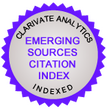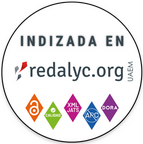Blended learning: uma revisão sistemática sobre vantagens e desvantagens na percepção dos alunos e impactos nas IES
DOI:
https://doi.org/10.13058/raep.2021.v22n1.1915Keywords:
Ensino, Administração, PesquisaAbstract
O objetivo deste trabalho foi identificar como o blended learning impacta o modelo de negócios das instituições de ensino superior (IES) e quais são as vantagens e desvantagens percebidas pelos alunos de IES quanto à utilização do blended learning. Para alcançar essa objetivo, realizou-se uma revisão sistemática da literatura em cinco bases de dados e, após todas as etapas necessárias para a sua execução, a amostra final para análise foi composta de 21 trabalhos. Como resultados nota-se que a implementação do blended learning nas IES altera o modelo de negócios existente, porém esse impacto é analisado sob a perspectiva de alguns elementos em específico (como o custo) e não por meio de uma abordagem holística. No que se refere às vantagens e desvantagens percebidas pelos alunos de IES tem-se uma convergência dos resultados dos trabalhos analisados. Esses aspectos podem ser vistos como um bom direcionador de quais aspectos potencializam o blended learning na perspectiva dos alunos e quais aspectos necessitam de maior atenção por parte dos responsáveis pela implementação e execução do blended learning nas IES por serem entendidas como desvantagens pelos alunos.Downloads
Downloads
Published
How to Cite
Issue
Section
License
By publishing a manuscript in the journal Administração: Ensino e Pesquisa (RAEP), the authors declare that the work is of their exclusive authorship and therefore assume full responsibility for its content. The authors grant RAEP a non-exclusive rights license to use the work in the following ways:
(1) Sell and / or distribute the work in hard copies or electronic format.
(2) Distribute parts of the work as a whole to promote the journal through the internet and other digital and printed media.
(3) Record and reproduce the work in any format, including digital media.
Authors and readers are permitted to share the material, use it in classes, for presentations and also for other purposes, and to create new knowledge based on any RAEP publication, as long as the due credit is attributed to the original work and the respective author(s), through citations, references, and other means.
The journal adopts preventive measures to identify plagiarism using software designed for this purpose.
RAEP does not charge authors for the article submission nor for the publishing of approved articles.
In line with the journal's policies, each published article will be given a Creative Commons CC-BY 4.0 license.










